These Video Game Images Of Paris Look So Vivid, We Mistook Them For The Real Thing
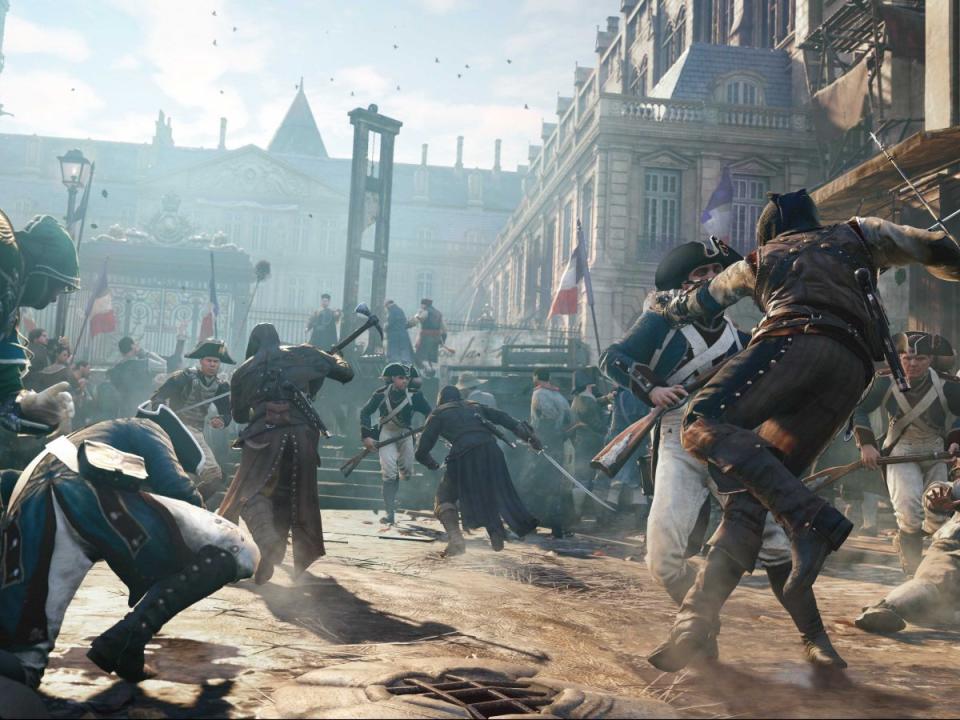
Ubisoft The game takes place during the French Revolution.
The beauty of Ubisoft’s open-world “Assassin’s Creed” series isn’t necessarily the gameplay or the characters.
It’s how amazingly real the settings look.
The games are historically accurate and so full of rich detail, you almost feel like you’re visiting the locations in real life.
Previous games have taken place in 15th-century Florence, Venice, and most recently, America during the Revolution, and on the high seas during the 18th century. But with the next next iteration, called “Assassin’s Creed: Unity,” Ubisoft decided to go back to the franchise’s roots and set the game back in a densely populated European city: Paris.
“When we started ‘Unity,’ we knew that this was going to be the first fully ‘next-gen’ title of ‘Assassin’s Creed,’” Ubisoft Montreal creative director Alexandre Amancio told Business Insider.
“Because we knew this, we also knew this was probably a good time to go back to the roots. Any franchise, be it video game or movie, especially those that rely on rich narratives, tend to start becoming bogged down by the weight of their own mythology. So we knew that this was going to be a sort of new start.”
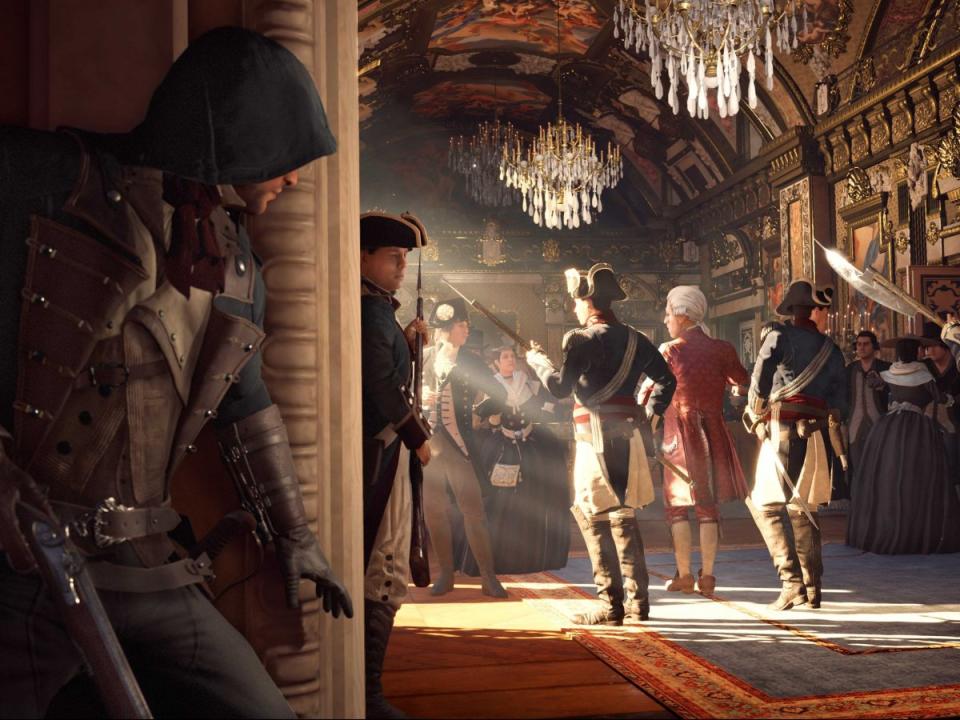
Ubisoft
‘Social stealth’ is where the player interacts with nonplayable characters.
When the first “Assassin’s Creed” game came out in 2007, it introduced something called “social stealth,” where you could blend in with the crowds.
The idea of interactive crowds was new to the video game industry at the time. And back then, Ubisoft boasted that there were 200 nonplayable characters loaded at once.
With “Unity,” that number has been boosted to thousands.
The team looked at several different timelines in Paris’ history and landed on setting it during the French Revolution.
“It’s a period where not only is there political upheaval and a lot of interesting and famous historical characters, but there’s huge crowds. And the crowds are not happy,” Amancio said. “It offered the proper fuel for our new narrative.”
And much like in the games before it, the imagery is stunning.
Here’s Notre Dame in the game. It took the artist who created it close to a year to model it inside and out.
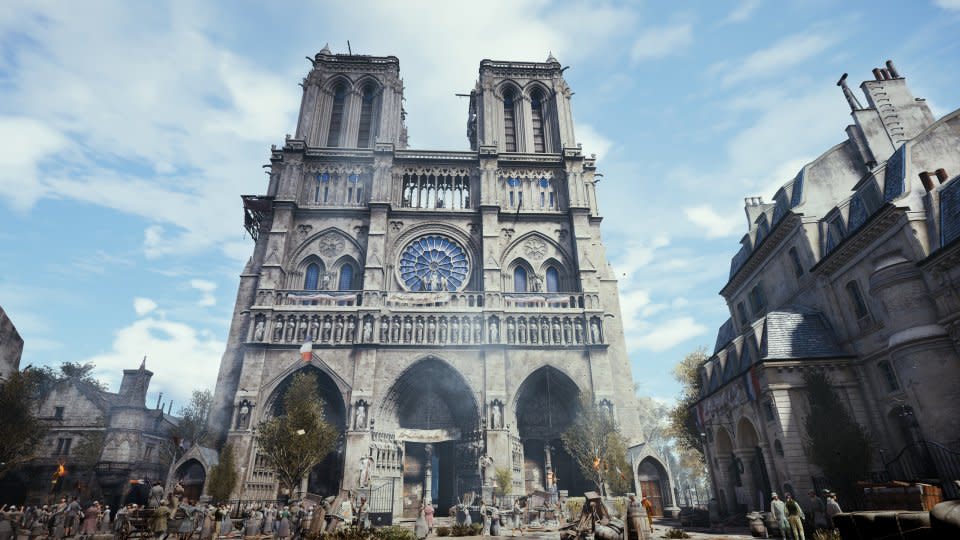
“Sometimes we actually do intentionally slip in some inconsistencies. For example the famous spire in the back of Notre Dame wasn’t built until almost 100 years later,” Amancio says. “We felt that when people saw Notre Dame, if that wasn’t there, it wouldn’t feel like Notre Dame. It’s not done out of a mistake. Sometimes what feels real and what is real are two very different things.”
This is what Notre Dame looks like in real life.
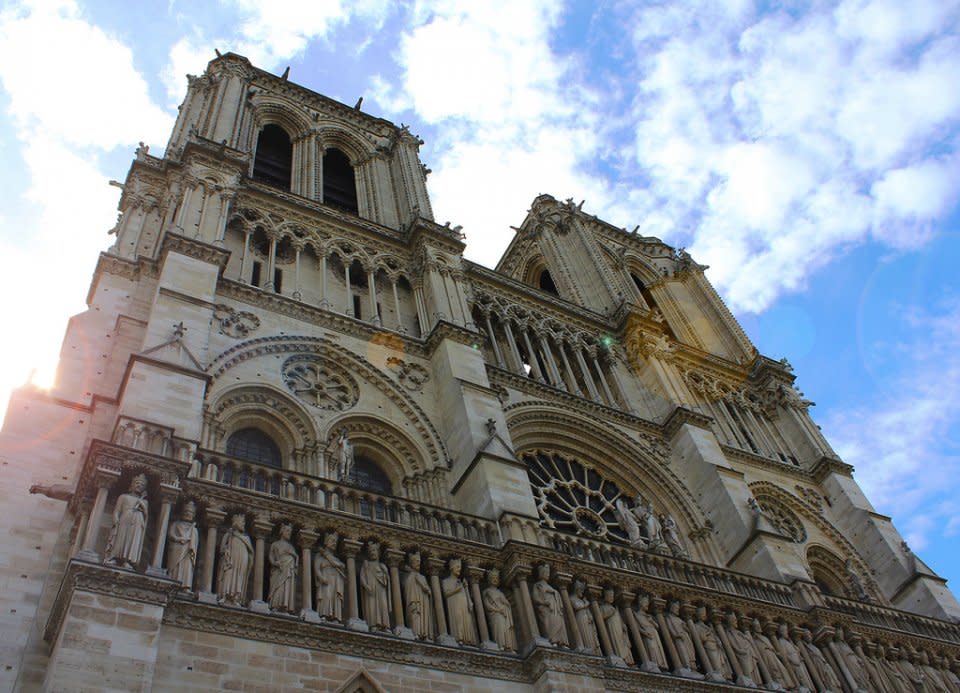
The team spoke with historians in order to be historically accurate. They had one full-time historian on the team, and a few consulting historians. This is what the Bastille looks like in the game.

Two of the historians that Ubisoft consulted with are among the top people who study the French Revolution, Amancio says. They provided accurate information about the historical events in the game, such as the storming of the Bastille.
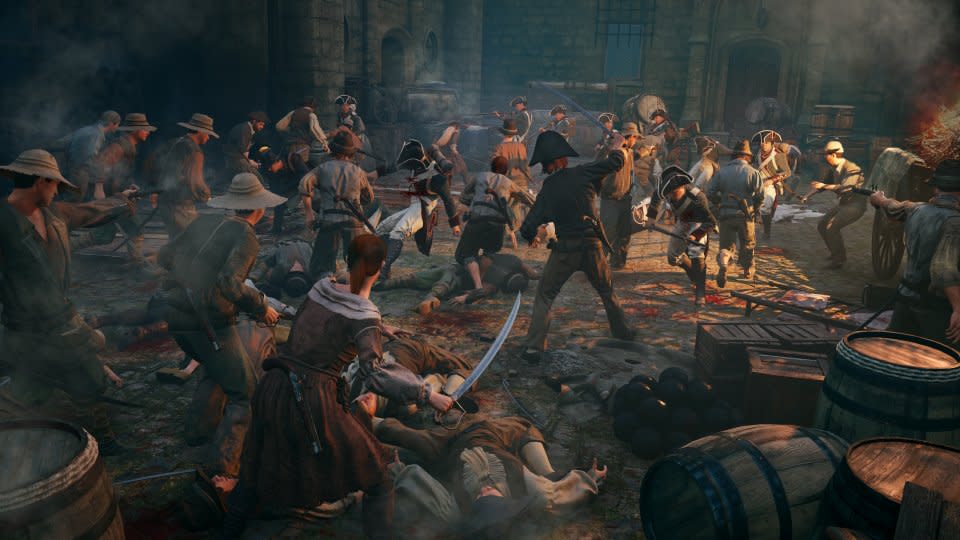
The team visited Paris and took a lot of pictures, both of the buildings and interiors, but also closeup pictures of the actual building materials. This is the Palace of Versailles in the game.

And the Palace of Versailles in real life.

Amancio says this is the first time that they’ve built a 1:1 city within “Assassin’s Creed.” That allowed them to build accurate interiors, such as the Hall of Mirrors in the Palace of Versailles.
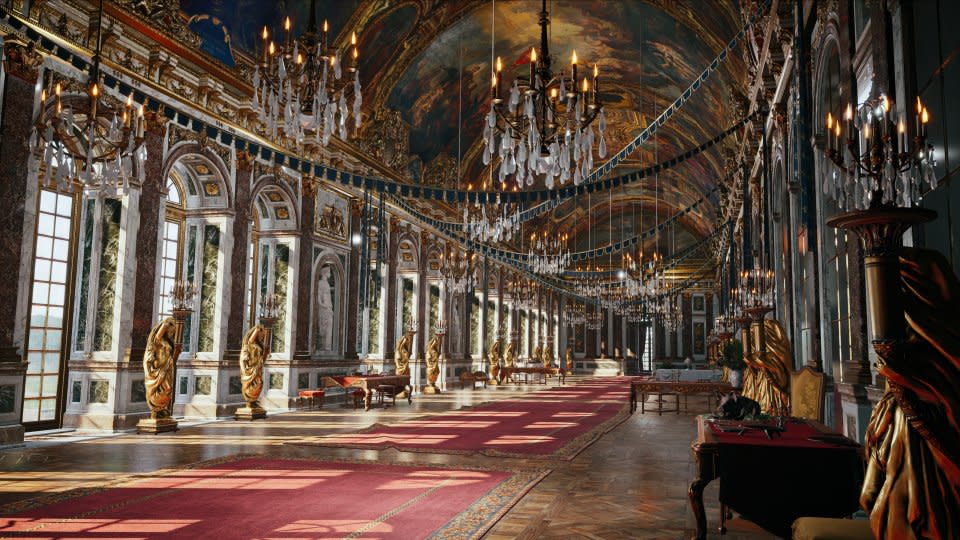
Here is the Hall of Mirrors in real life.

The game visits many historical landmarks that were important to the time period, such as Le Procope, what’s known as the oldest restaurant in continuous operation in Paris.

Famous historical figures used Procope as a meeting place.

The team visited museums and went on guided tours with members of the Louvre. Here’s the game’s rendition of the Louvre District.

Here’s what the Louvre looks like in real life.

Even the script in the game went through the historians. “We really wanted to make sure that everything feels real and truthful, and especially true to the spirit of the period,” Amancio says. Here is one such moment in the game: the beheading of King Louis XVI.

The team had access to old city plans, which were provided by the city of Paris. Here is what the Catacombs look like in the game.

Here’s another shot of the Catacombs. You can see the level of detail, such as the skulls embedded in the walls.

Here’s a closeup shot of the Catacombs in real life.

When the original “Assassin’s Creed” came out in 2007, it boasted crowds of around 200 nonplayable characters that you could interact with. The game introduced the industry to the concept of “social stealth.”

“Assassin’s Creed: Unity,” however, includes crowds of thousands that make the game more realistic than ever.

There’s another new video game in town …

This is the video game that’s bringing in millions of dollars for Disney>>
Read more stories on Business Insider, Malaysian edition of the world’s fastest-growing business and technology news website.


